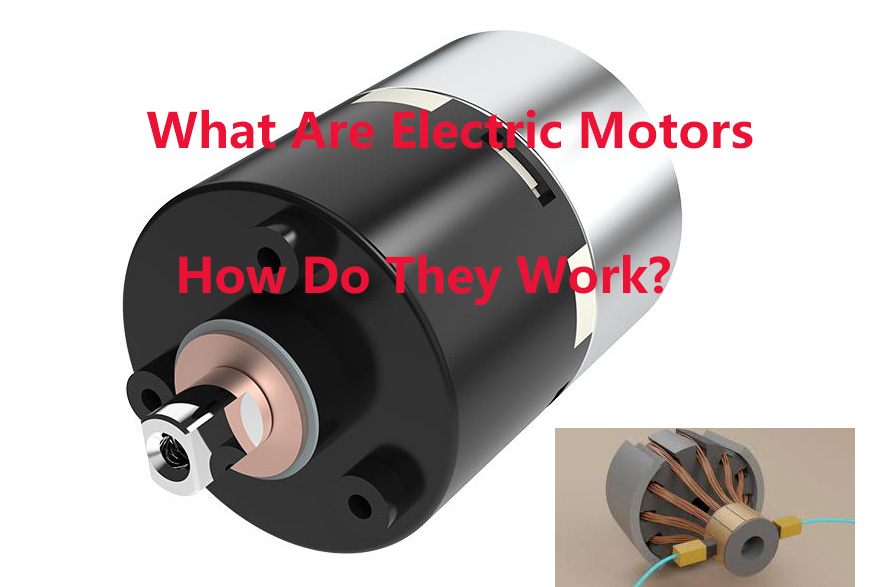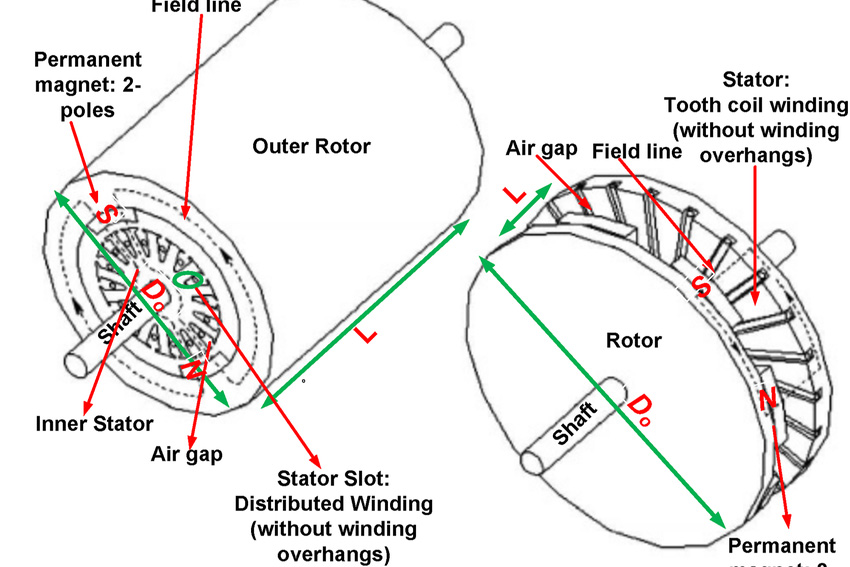Permanent Magnetic Synchronous Motors
What Are Permanent Magnet Synchronous Motors?
The permanent magnet synchronous motors (PMSM) are similar to the traditional AC synchronous motors, but the field, in this case, is excited by permanent magnets that create sinusoidal back EMF. They are similar to typical rotating electric motors that consist of a rotor and a stator. However, permanent magnet synchronous motors use just a rotor, which creates the magnetic field.
Construction
Permanent magnet synchronous motors are very efficient, brushless, secure, very fast, and offer high dynamic performance. Due to their advantages, permanent synchronous motors have many applications in various industries. Many manufacturers now produce permanent magnet synchronous motors with varying specifications for different applications. Note that AC synchronous motors are the most widely-used steady-state 3-phase AC motors in electrical systems, where they help to convert electrical energy into mechanical energy. The motors operate at a synchronous speed that is constant and synchronous with the supply frequency of AC cycles. Since AC synchronous motors have a speed of the motor that is equal to the rotating magnetic field, they are mostly used in power systems to improve the power factor of the system.
 Rare Earth Permanent Magnet Motors
Rare Earth Permanent Magnet Motors
How Permanent Magnetic Synchronous Motors Work
The operation principle of permanent magnet synchronous motors is based on the interaction of the rotating magnetic field of the stator and the constant magnetic field of the rotor. Permanent magnet synchronous motors (PMSM) are known to be pretty efficient, brushless, very fast, safe, and provide high dynamic performance when compared to conventional motors. They are equally very reliable. In this case, instead of using winding for the rotor, the permanent magnets are mounted to generate a rotating magnetic field. These types of motors are very simple and less costly. With a stator (having 3 windings installed on it) and a rotor with a permanent magnet mounted (for creating a rotating field), the 3-phase AC supply is provided to the stator so it can start working. Note that the PMSM is AC synchronous motors whose field excitation is provided by permanent magnets with a sinusoidal back EMF waveform. With the help of the permanent magnets, the PMSM can generate torque at zero speed.
Types of PMSM
PMSM types depend on how the magnets are attached to the rotor, as well as the design of the rotor. Permanent magnet synchronous motor can be classified into two types:
- Surface permanent magnet synchronous motor (SPMSM)
- Interior permanent magnet synchronous motor (IPMSM).
- SPMSM mounts all magnet pieces on the surface
- IPMSM places magnets inside the rotor
Additionally, depending on the design of the stator, a PMSMs can also be classified as:
- With distributed winding
- With concentrated winding
Properties of Permanent Magnetic Synchronous Motors
- PMSM do not emit sparks and are safer in explosive environments.
- They are clean, very fast, and efficient.
- They are more compact and lighter than an ACIM.
- PMSM typically runs with/without position encoders.
- Smooth low- and high-speed performance. Work well for high-performance applications.
- Produces low audible noise and EMI.
- They generate high torque if coupled with Field-Oriented Control (FOC).
Core Advantages
Here are some of the core advantages of a permanent magnet synchronous motor:
- High power density
- Much less noise
- Dynamic performance in both high and low-speed operation
- High-efficiency at high speeds
- Efficient dissipation of heat
- Low rotor inertia makes it easy to control
- No torque ripple when the motor is commutated
- High and smooth torque and dynamic performance
- Resistant to wear and tear
- Available in small sizes at different packages
- Easy maintenance and installation than an induction motor
- Capable of maintaining full torque at low speeds
- High reliability
Further Reading: Advantages and Applications of Permanent Magnet Synchronous Motor
Disadvantages
The main disadvantages of permanent magnet synchronous motors are:
- High initial costs and very expensive compared to induction motors.
- Can be difficult to start up since they are not self-starting motors.
Applications of Permanent Magnetic Synchronous Motors
Permanent magnet synchronous motors have applications in the following areas:
- AC compressors
- Refrigerators
- Direct-drive washing machines
- Automotive electrical power steering
- Machine tools
- Air conditioners
- Control of traction
- Data storage units
- Servo drives
- Electric vehicle drivetrain
- Large power systems where improved leading and lagging power factors are required
- Robotics
- Aerospace
Conclusion
PMSM is a 3-phase AC synchronous motor that runs at synchronous speed with the applied AC source. It produces smooth torque and low noise. It is mainly used for high-speed applications like robotics. The principle of operation of permanent magnet synchronous motors is based on the interaction of the rotating magnetic field of the stator and the constant magnetic field of the rotor. Thank you for reading our article and we hope it can help you to have a better understanding of permanent magnet synchronous motors.
If you want to learn more about magnets, we would like to advise you to visit Stanford Magnets for more information. As a leading magnet supplier across the world, Stanford Magnets has been involved in the R&D, manufacturing, and sales of magnets since the 1990s. It provides customers with high-quality permanent magnets like SmCo magnets, neodymium magnets, AlNiCo magnets, and ferrite magnets (ceramic magnets) at a very competitive price.















